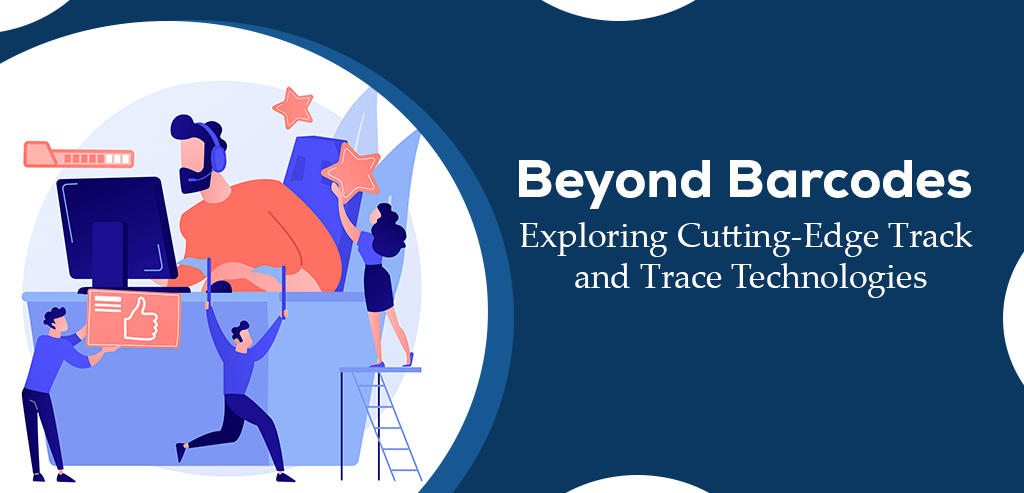Tracking and tracing products across the supply chain is crucial for ensuring efficiency, transparency, and safety. While barcodes have long been the go-to technology for this purpose, a new era of cutting-edge track and trace technologies is emerging. These innovative solutions, leveraging advancements in areas such as RFID (Radio-Frequency Identification), IoT (Internet of Things), blockchain, and AI (Artificial Intelligence), offer unprecedented levels of accuracy, real-time visibility, and data analytics. Here, let us have a complete idea about the numerous solutions available and how it benefits a business.
Blockchain-based Track and Trace
Blockchain technology offers an immutable and decentralized approach to track and trace processes. By leveraging the distributed ledger system, it enables secure and transparent documentation of every transaction or movement along the supply chain. Each step is recorded as a block, creating an auditable and tamper-proof record. Blockchain-based track and trace systems ensure data integrity, prevent fraud, and enable end-to-end traceability, making them particularly valuable in industries such as pharmaceuticals, food, and luxury goods.
Radio Frequency Identification (RFID)
RFID technology utilizes radio waves to identify and track objects. Unlike barcodes, RFID tags do not require a direct line of sight for scanning, allowing for seamless tracking in bulk or high-speed environments. RFID tags can store unique identifiers and additional data, providing real-time visibility into the location and status of assets. This technology finds applications in supply chain management, logistics, retail, and healthcare, improving inventory management, reducing errors, and expediting processes.
Near Field Communication (NFC)
NFC is a short-range wireless communication technology that enables the exchange of data between devices in close proximity. With its read and write capabilities, NFC facilitates contactless tracking and tracing. It is widely used in access control, electronic payment systems, and asset management. NFC-enabled devices, such as smartphones or tablets, can interact with NFC tags embedded in products or assets, gathering information about their origin, history, or authenticity.
QR Codes
Quick Response (QR) codes have gained significant popularity due to their versatility and ease of use. These matrix barcodes can store large amounts of information, including URLs, text, or other data. QR codes can be easily scanned using smartphones, making them accessible to consumers and businesses alike. In track and trace applications, QR codes provide a cost-effective and scalable solution for capturing and sharing data. They are commonly used in product labeling, ticketing, inventory management, and authentication processes.
GPS-based Tracking Systems
Global Positioning System (GPS) technology allows for real-time tracking and tracing of assets using satellite-based positioning. GPS trackers are widely employed in transportation and logistics, enabling accurate monitoring of vehicles, containers, or packages throughout their journey. GPS provides location information, speed, and route history, thus enhancing supply chain visibility, optimizing routing, and improving delivery efficiency. These systems are particularly valuable in time-sensitive industries, such as perishable goods or high-value shipments.
Artificial Intelligence (AI) and Machine Learning (ML)
AI and ML technologies are transforming track and trace processes by enabling advanced analytics and predictive capabilities. These technologies can analyze large volumes of data to identify patterns, detect anomalies, and predict potential bottlenecks or risks in the supply chain. AI-powered track and trace systems can enhance forecasting accuracy, optimize inventory management, and automate decision-making processes. Businesses can achieve proactive supply chain management, improve customer satisfaction, and minimize operational costs with AI & ML technologies.
Biometric Track and Trace
Biometric track and trace technologies leverage unique physiological or behavioral characteristics to identify and track individuals or objects. Biometric data, such as fingerprints, iris patterns, or facial features, can be securely stored and matched against databases to establish identity and ensure traceability. These systems find applications in areas like border control, law enforcement, and product authentication. Biometric track and trace technologies offer enhanced security, reduced fraud, and faster identification processes.
Internet of Things (IoT)
The Internet of Things (IoT) connects physical objects to the internet, enabling them to gather and exchange data. In track and trace applications, IoT devices, such as sensors or smart tags, can collect real-time information about products, equipment, or environmental conditions. Integrating IoT into supply chain management helps organizations monitor inventory levels, track temperature or humidity-sensitive goods, and automate reordering processes. IoT-enabled track and trace systems enhance visibility, optimize operations, and enable proactive decision-making based on real-time data.
Conclusion
The limitations of traditional barcodes are being surpassed by a new generation of cutting-edge track and trace technologies. From RFID and IoT to blockchain and AI, these innovative solutions offer unparalleled accuracy, real-time visibility, and data analytics. Among the frontrunners in this field is LetsVeriFy, a technology company dedicated to providing unforgeable authentication solutions for brand protection and product track and trace. With our expertise and commitment to innovation, LetsVeriFy exemplifies the transformative potential of these advanced track and trace technologies, ushering in a new era of transparency and security in the global marketplace.

